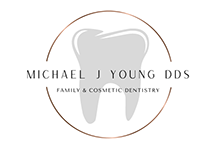 Gum disease is one of the more wide-spread dental health issues, affecting more than half of the adult population in the United States. The good news is that with good hygiene and proper dental care, you can largely prevent gum disease from developing. However, if you notice the signs of its beginning stage, known as gingivitis, and don’t seek treatment immediately, you may lose the chance to reverse the condition. By the time you do visit your dentist, you will have to focus instead on controlling gum disease before it causes severe dental damage.
Gum disease is one of the more wide-spread dental health issues, affecting more than half of the adult population in the United States. The good news is that with good hygiene and proper dental care, you can largely prevent gum disease from developing. However, if you notice the signs of its beginning stage, known as gingivitis, and don’t seek treatment immediately, you may lose the chance to reverse the condition. By the time you do visit your dentist, you will have to focus instead on controlling gum disease before it causes severe dental damage.
It Sticks Around
The beginnings of gum disease can be traced back to a few of the over 600 different kinds of oral bacteria in a healthy human mouth. The microbes form plaque and gather along your gum line, leading to infection and irritation if not removed at least twice a day by brushing and flossing. While gingivitis can sometimes be reversed by removing the bacteria and infection, gum disease is not curable once it gains a strong enough hold on your periodontal tissues.
It Could Embarrass You
Along with swollen, bleeding gums, one of the more prominent symptoms of gum disease is chronic, untreatable bad breath, or halitosis. No matter how well you brush your teeth and gums, the diseased tissues can make social interaction embarrassing until you treat the condition and improve your bad breath.
It’s the Leading Cause of Tooth Loss
In its advanced stages, gum disease destroys the tissues and jawbone that support your teeth by their roots. Because gum disease often remains unnoticed until its later stages, many people lose one or more teeth by the time they seek treatment, which makes the condition the leading cause of adult tooth loss.

